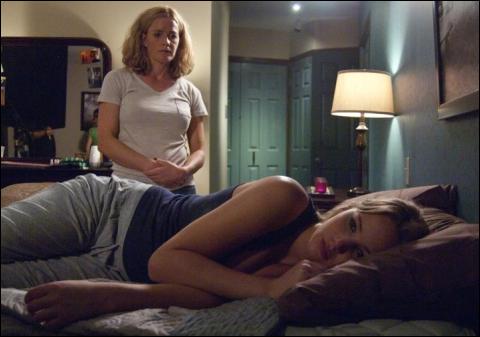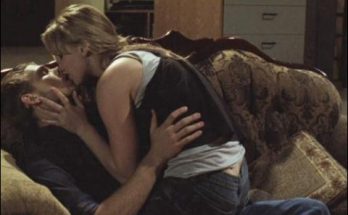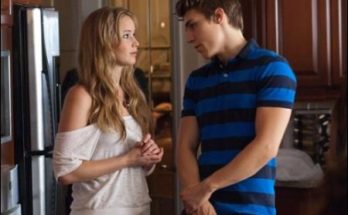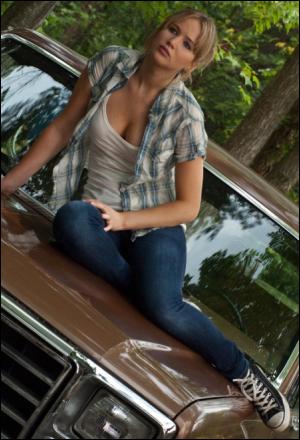A spooky, decaying house, a young man with a terrifying secret and a teenage girl with a mind of her own are classic elements of horror-thriller movies, but in House at the End of the Street, a team of ambitious and creative filmmakers transcends the genre with moody, stylish visuals, realistic and relatable characters, and mysterious secrets hidden in plain sight.
“House at the End of the Street is complicated in the way most good movies are,” says producer Aaron Ryder. “It is a bit of a Hitchcockian thriller, geared toward a younger audience with a great young cast. The script is really good—and by that I mean really scary.”
The characters in House at the End of the Street are haunted by a horrific tragedy that took place several years before the movie starts. “A couple was murdered by their mentally handicapped daughter who has disappeared,” says Ryder. “Now Elissa and her mother Sarah move into the house next door to where this massacre happened. There is a single survivor, a young man named Ryan, still living in the house. Elissa begins a relationship, maybe her first love, with this kid. But it turns out there’s an underlying evil within this town.”
Although this taut psychological thriller is full of the kinds of twists and surprises that keep audiences on the edge of their seats, House at the End of the Street is a character-driven film, says the producer. “One of the things I like about this movie and these characters is that no one is stereotypical,” says Ryder. “You don’t have the stereotypical mother-daughter relationship. Elissa is actually a bit more responsible than Sarah. Ryan is dark and mysterious, but also very vulnerable and really attractive. You can see why a young girl would be attracted to him.”
The film is based on an original short story by veteran writer, director and producer Jonathan Mostow, and underwent an extensive development process by Mostow and his producing partner, Hal Lieberman. “It’s uncommon to find material like this already really well-developed by expert filmmakers,” Ryder says. “Because of that, a lot of very experienced directors were interested in this project.”
With a deep pool of talent to draw from, Ryder and his fellow producers eventually selected Mark Tonderai, who had just created a stir in the independent film world with his debut feature, Hush, a tense and tightly plotted British thriller. “We were really excited to meet Mark because of Hush,” says Ryder. “With a relatively small budget and a limited amount of time, he created a really terrifying film. Hush reminded me of Jonathan Mostow’s Breakdown. It’s a really well-made, well-crafted film and Mark got the job because of that.”
In his sophomore outing, Tonderai stays one step ahead of his audience, keeping them off balance by creating plausible doubt and mounting suspicions. “This is a film that’s all about what lies beneath,” he says. “It’s about dualities. Everyone has that within them and I think that’s why the film works. Parenthood versus coming of age. Grief and redemption. First love and second chances. These are all the things that we talk about in this film. It is what gives the film a soul and keeps it from being just another horror-thriller. We wanted to elevate the genre and we worked really hard to do it.”
It was his desire to make a psychological thriller that achieved more than just scares that Tonderai says fueled his passion throughout the two years it took to make the film. “As a director it’s important to find something that strikes a chord with you, so I don’t look at story as much as I look at what the story is trying to say.”
Next Page: Theme, Concept and Characters
Views: 44



